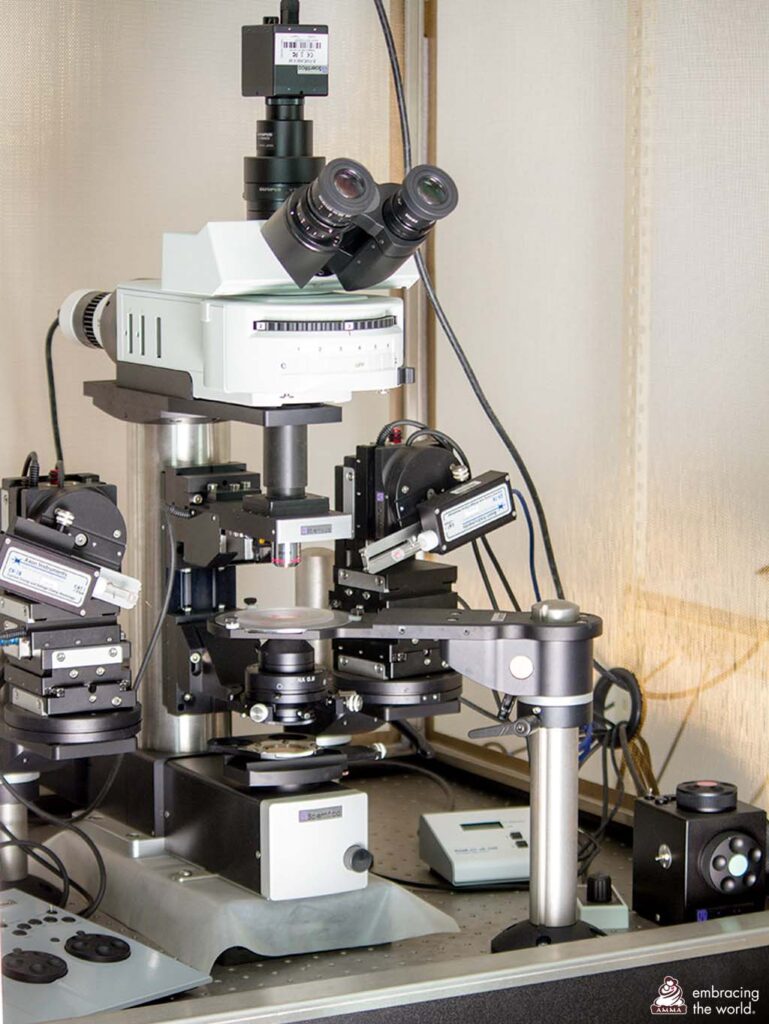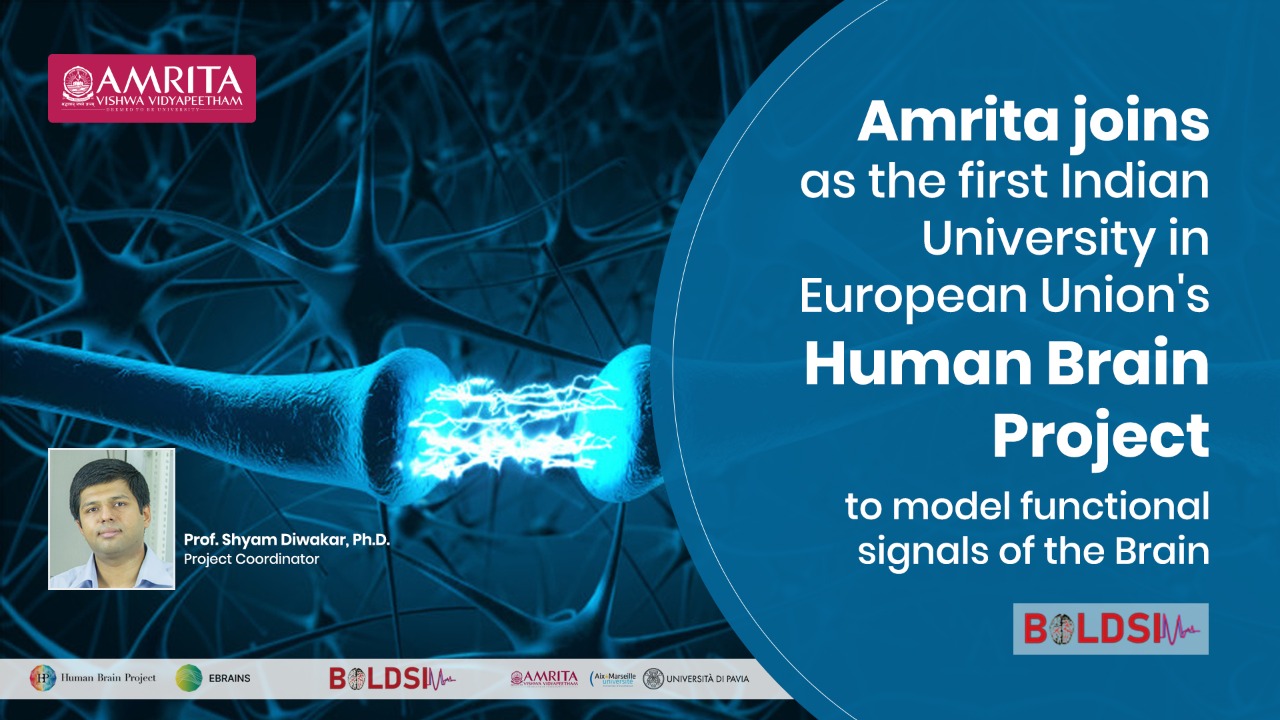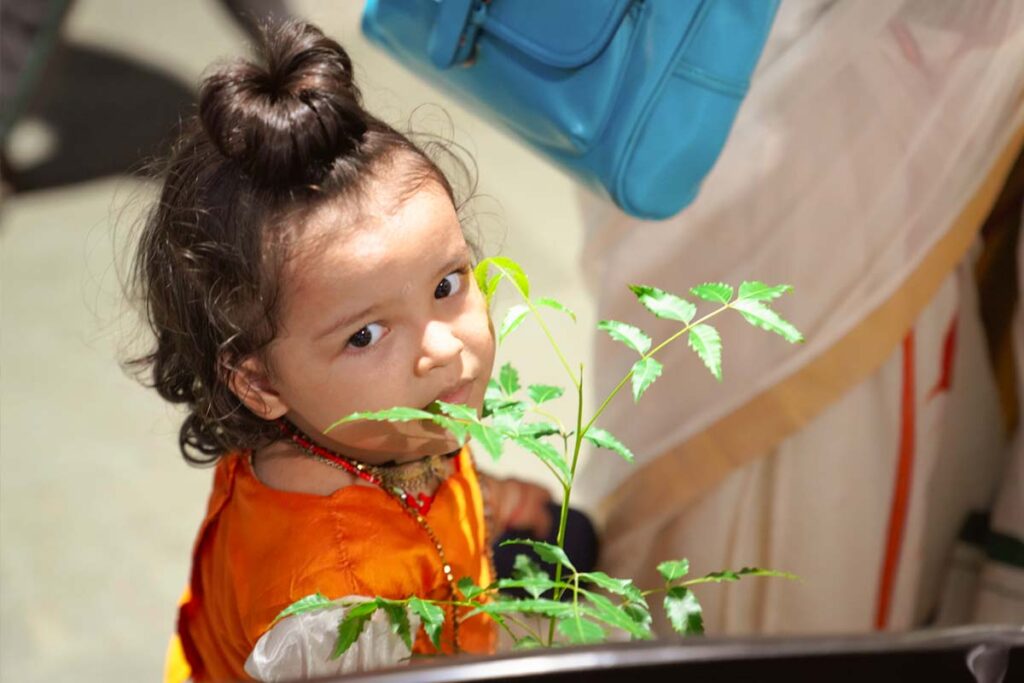Amrita Vishwa Vidyapeetham has become the first Indian University to partner with European Union’s Human Brain Project that has 143 University institutes in Europe working together to understand brain function and develop solutions to better understand and cure brain diseases.
Functional signals directed by magnetic resonance imaging (fMRI) techniques are widely used in specialty hospitals and advanced clinics to monitor brain activity noninvasively. However, to connect these signals to the underlying activity of brain cells or neurons has been a challenge.

Dr. Shyam Diwakar and team at the Amrita School of Biotechnology have joined HBP’s project called BOLDsim. They will develop a new computational tool for modeling functional signals in the brain using cellular data-driven models. The collaborators are University of Pavia in Italy and Aix-Marseille University in France and the team is coordinated by the Swiss Federal Institute of Technology, Lausanne (EPFL) in Switzerland.
“Neuroscientists often want to understand health and disease in the brain, spinal cord and its circuits from both cellular and behavioral levels to correctly map how a disease affects a person. Since 2009, we have been developing models of cerebellum and how its signals are affected during conditions,” explains Diwakar.
“We have been using experimental data and computer simulations to create a better understanding of how brains operate. BOLDsim will enhance the usability of our computer models and scale a new dimension towards assessing brain health while making what was previously impossible to identify.”

A memorandum of understanding was signed between Amrita University and EPFL to work together on the project. The undertaking is part of the HBP’s EBRAINS Infrastructure and offers an extensive portfolio of brain data, scientific services, digital tools and computing resources for researchers and industry.
BOLDsim will model the special signals generated by brain activity, which are called the blood oxygen level dependent (BOLD) signals, by using cellular-level data available in the HBP’s Brain Simulation Platform (BSP). The modelling tool will be made available freely for neuroscience researchers.
The project joins with Prof Egidio D’Angelo and team at the University of Pavia and with The Virtual Brain (TVB) being developed at Aix-Marseille University. Modelling will allow experts a clearer look to precisely understand how brain conditions manifest and to point to changes in neural circuits during certain healthy and disease conditions seen in patients.
“I am very happy that we have become the first Indian university to partner with the Human Brain Project and will model a simulator for understanding brain conditions and model brain function,” says Amrita’s Vice-Chancellor, Dr. Venkat Rangan.
“We view ourselves as a research-intensive institution that has over the last 15 years established more than 180 collaborations with the top-500 world-ranked universities. Now via this MoU with the Swiss Federal Institute of Technology Lausanne in Switzerland and our Human Brain Project partners, University of Pavia in Italy and Aix-Marseille University in France, we will add a new dimension to our cutting-edge neuroscience research as well.”

BOLDsim will also allow a new understanding of how the brain computes in addition to being used as medical prediction models. The HBP project will run until 2023, although a first level stage is expected to be completed by October 2021.
* The last image, “Neurons” by National Institutes of Health (NIH), is licensed under CC BY-NC 2.0.





